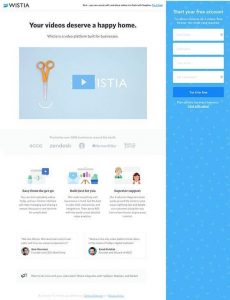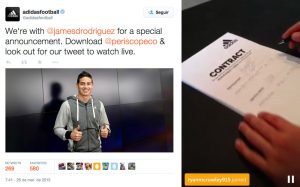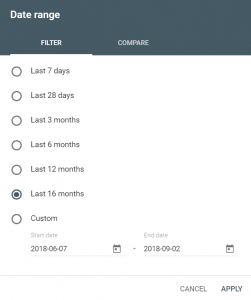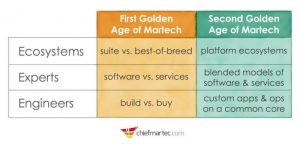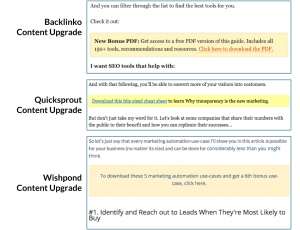Accurate sales forecasting requires technology, process, and accountable people. The technology has to very easy to use. The process needs to be embedded in the technology. The people all have to use the technology to ensure they follow the process. If any one of these pieces is missing, forecast accuracy is greatly diminished.
With regard to technology , the key is to give the sales reps a forecast methodology and a very easy and intuitive screen to create a forecast natively in your CRM system. Not just report the forecast, but to have an actual worksheet where they can create it and update it. Sales reps should be able to create a forecast in less than 15 minutes, in real time and roll-up automatically to each management level. The technology should eliminate your dependence on clunky, time consuming and frustrating spreadsheet roll-up exercises.
, the key is to give the sales reps a forecast methodology and a very easy and intuitive screen to create a forecast natively in your CRM system. Not just report the forecast, but to have an actual worksheet where they can create it and update it. Sales reps should be able to create a forecast in less than 15 minutes, in real time and roll-up automatically to each management level. The technology should eliminate your dependence on clunky, time consuming and frustrating spreadsheet roll-up exercises.
With a strong forecasting platform (real-time worksheet/reporting, methodology and trained-up sales reps/managers) in place, you would think you would be good to go and have an accurate forecast. That assumption would be incorrect. An accurate forecast also depends on the quality of how your sales pipeline is being managed. Bad data in your CRM system will only lead to bad forecast accuracy. The four rights of forecasting are focused on ensuring you have quality pipeline data.
Right #1 Reps need to be working on the right opportunities.
Successful selling involves asking some tough questions early in the engagement and being honest about the answers. The tough questions should ensure you are selling to your target customer persona. Does the buyer fit that persona? Is there sufficient magnitude or urgency in solving the business challenge? Does the project have sufficient political sponsorship to shepherd it to completion. If the prospect’s intentions do seem credible, is the opportunity right for your company?
Ideally, you should be using a sales methodology that will help you to qualify the bad opportunities out by your proposal stage. Reps who work on unqualified opportunities will typically push those deals along the sales process until it is too late. Too late to save your company money (cost of sale increases as deals progress) and save themselves time – which is their most valuable resource. Unqualified deals that make it to a forecast will destroy your accuracy and consume valuable resources, as they are focused on the wrong potential revenue.
Right #2 Opportunities need to be in the right stages.
Opportunities that are not in the right stage means your sales rep is either not in sync with your sales process or with your buyer. To ensure that opportunities are in the right stage, you have to get back to the basics of following your sales process. To be effective, a sales process should be based on the customer’s buying process, which is the set of decisions that the customer wants to make, in the order that the customer wants to make them.
Each stage of your sales process should have a customer-validated activity that ensures that the opportunity has a right to be in that stage. The customer should tell the seller when to move along, not vice versa. For example, a key validation activity after a needs dialogue would be for the sales rep to send a summary email of the meeting along with next steps and the ask that the buyer respond with approval to take next steps. If the prospect does not respond, the opportunity does not move to the next stage until the prospect confirms.
When strong customer validation is in place, opportunities will very seldom be in the wrong stage. Opportunities in the wrong stage will inflate your forecast, chew up valuable resources and foster “deal pushing” behaviors.
Right #3 Opportunities need to have the right value.
Although it can vary by industry, valuing an opportunity is usually practiced more as an art than using principles founded in reality. Many managers actively ignore opportunity value until the deal is actually committed – because they don’t actually believe the numbers – but in doing so, they allow forecasting and even cash flow problems to grow wings. Also, loose deal valuation leads to loose opportunity management from the very start of the sales process, as evidenced in poor questioning, poor deal strategizing and weak management of stakeholders.
It is wise to have minimum deal values, early in the sales process that are increased over time, versus the more usual practice of reducing the deal value, as the deals get closer to the end of the sales process. We’ve all experienced the end-of-quarter forecast collapse, as big deals turn into nothing more than small trials of the product or service.
A best practice recommendation is for sales reps to use their historical average deal sizes for the early stage valuation if they have no clue as to the value, but they know the solution they will offer. This will greatly help to reduce the guessing. Second, track late stage deal valuation changes to determine discount trending. Having this knowledge will give you additional insight into how over-inflated the bottom of your pipeline could be.
Right #4 Opportunities need to have the right close date.
CRMs have turned close dates into a mandatory and potentially meaningless “field”, yet it’s the one of the main metrics that drive a forecast, tells us how optimistic or realistic the rep is, and how well informed they are about the opportunity. And it’s the metric that tells us the extent to which the rep is tuned into the buyer’s timeline – which in turn, drives the sales forecast. Managers need to encourage reps to develop two specific behaviors with regard to close dates:
- Raise timeline issues early in sales conversations with buyers.
- Stop and think about real consequences of selecting a close date, before committing to it.
World-class sales managers don’t allow close dates to be treated as a guessing game; they make accurate close date recording part of sales performance measurement, correction and recognition. Here’s a great tip, know the average sales cycle of each individual rep. When reps first enter opportunities into your CRM system, they may not have a handle on the close date. Coach them to use a date in the future that is out at least the same number of days as their average sales cycle. If you have software that can predict a close date based on the sales reps historical performance, all the better to give them deeper insight into a more accurate timeline.
By helping sales people to focus on the four rights of accurate sales forecasting, you can eliminate most of the manual forecasting efforts, remove your dependence on spreadsheets and give back to your sales team more time that they can spend on closing business.
Business Articles | Business 2 Community
(306)

